Shoyu Ramen is one of my absolute favourites and in my opinion very underrated in New Zealand. It’s got a lot of complex flavour thanks to the double soup (blend of chicken soup and dashi) and remains quite light, truly a ramen you can eat everyday!
Prelude notes
Recommended prep breakdown
Day -7: Steep tare (10mins)
Day -3: Marinade ajitama (45mins)
Day -1: Noodles & chashu (3-4 hours)
Day of serving: Soup, Dashi & remaining toppings (6-8 hours)
Substitutions
Making your own noodles is entirely optional and substituting for store bought noodles here is 100% fine especially if you’re less experienced at making ramen.
If you do choose to buy your noodles, try to get ones that are on the thinner side and contain alkaline salts as the texture will be closer to ramen noodles.
Ingredient sourcing
Dashi ingredients have always been notoriously hard to source in New Zealand, here are some tips for each:
Kombu: try look for ‘Ma kombu’ or ‘Rausu kombu’ at Japan Mart, these are both really good varieties of kombu. Cheaper varieties at Japan Mart and some asian supermarkets like Yan’s in Wellington or Tai Ping / H-Mart / Wang Mart in Auckland will also do fine.
I’ve also had good results from NZ-made kombu that you can find at specialty grocers like Moore Wilsons or Farro.Niboshi: I’ve had the best luck finding niboshi at Japan Mart, if you can't find any you can leave this out of your dashi or use korean niboshi that you can easily find in the freezer section at Wellmart / Harae Mai in Wellington or H-Mart / Wang Mart in Auckland.
Katsuobushi: Japan Mart readily stocks nice katsuobushi these days. Some New Worlds have even started to stock decent katsuobushi too.
Chicken
Stewing hens (sometimes called table hens) are old egg-laying hens and they provide the soup with more umami flavour, the tradeoff is the fat from these birds aren't as aromatic as regular chickens so a 1:1 ratio with corn-fed whole chickens is my go to. I've had the best luck getting stewing hens at Yan’s supermarket or oSavmo in Wellington. They’re much easier to find in Auckland though, most chinese supermarkets will stock stewing hens.
Chicken feet
They’re a bit harder to find in Wellington but I’ve had good luck finding these at Pak n Save in Petone & Lower Hutt. Same story in Auckland though, any chinese supermarket with a butcher section will most likely have chicken feet.
Soy Sauce
This is the ‘Shoyu’ in Shoyu ramen and will be the main flavour profile so try to find the best soy sauce you can find for the tare. I highly recommend the ‘Marudaizu’ soy sauce and ‘Yuuki’ variants (organic) that Japan Mart stocks. These are made using only whole soy beans and have a deep complex flavour profile. Feel free to use regular soy sauce though for the chashu & ajitama (Kikkoman is my go to).
Sodium & Potassium carbonate
The alkaline in ramen noodles, giving them the characteristic bite that ramen noodles have (fun fact: ramen noodles legally need to contain alkaline in them to be called ramen noodles in Japan). What adding sodium & potassium carbonate does is change the ph level of the dough and alters the texture of the noodle to be more firm/rigid.
You can make these at home by baking sodium and potassium bicarbonate in the oven at 150 degrees until the weight has reduced by a third (around 1.5 - 2 hours).
Alternatively adding baking soda instead achieves a similar effect but to a lesser degree.
Riboflavin
Adding riboflavin is completely optional, it’s main purpose is for colouring.
In NZ it’s more commonly known as vitamin b2 so you might have better luck searching for that.
Equipment
Stockpot (10L at least)
Heavy duty sieve/strainer
Timer
Scale
Pasta machine (if you’re planning to make your own noodles)
Rolling pin (for noodles as well)
Ingredient list
(Makes about 10~ portions)
This recipe references our ajitama and chashu recipes, below includes everything required for those recipes as well.
300g Marudaizu soy sauce
50g Kombu
20g Niboshi
20g Katsuobushi
5g Dried shiitake mushroom
5g Sea salt
10g Fish sauce
700g Soy sauce
500g Mirin
125g Sake
100g Brown Sugar
300g Vegetable oil
1.5kg Whole chicken
1kg Stewing hens
300g Chicken feet
2kg Pork Belly, boneless
1.2kg Bread flour
25g Gluten flour
12.6g Table salt
5g Sodium carbonate
7.6g Potassium carbonate
Small pinch Riboflavin (optional)
Cornstarch for dusting
10 Eggs (size 7)
100g Shallots
25g Garlic (peeled)
1 bunch Spinach
1 bunch Spring onion
3 sheets Nori
1 Onion (unpeeled)
1 Garlic (unpeeled)
8 leaves Napa cabbage
Instructions
Shoyu Tare
Credit to Keizo Shimamoto for this Shoyu tare recipe!
1 - Steep ingredients (Day -7)
Combine 300g marudaizu soy sauce, 35g mirin, 10g kombu, 5g shiitake in an airtight container.
Leave at room temp in a cool dark place for 7 days.
(The remaining steps to finish the tare are on step 19).
Ajitama
2 - Make ajitama (Day -3)
Ajitama (Ramen Egg) recipe
Full credit to ramen_lord for this recipe, this method produces an ajitama that is evenly marinated all the way through and reduces the risk of under or over-marinating the egg. Once I started using this method for pop-ups I’ve never gone back, the consistency and predictability it has is extremely valuable!
Chashu
3 - Make chashu (Day -1)
Chashu Recipe
I often got feedback at our pop-ups on how good our chashu was and customers were often surprised at how simplistic the recipe is. Honestly it just shows how far pork belly goes when seasoned and cooked well.
Noodles
(Day -1, ideally earlier in the day to allow for ample rest time)
4 - Combine dough
Add salt, sodium carbonate, potassium carbonate & riboflavin to 425g of filtered water. Stir until dissolved.
In a stand mixer (with dough attachment) or a mixing bowl (using chopsticks to mix), add the flour & gluten flour.
Add the water & alkaline salt mixture by slowly drizzling into the flour while mixing.
Keep mixing until the dough is evenly hydrated, it should look like tiny pebbles.
Wrap tightly or press into a large airtight container and leave to rest for at least 3-5 hours.
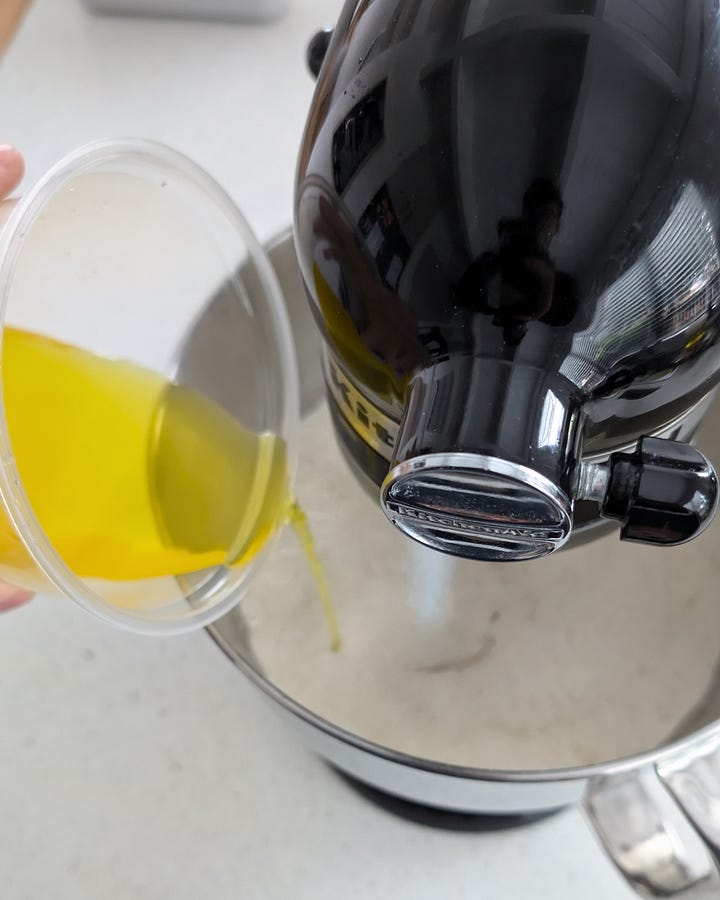
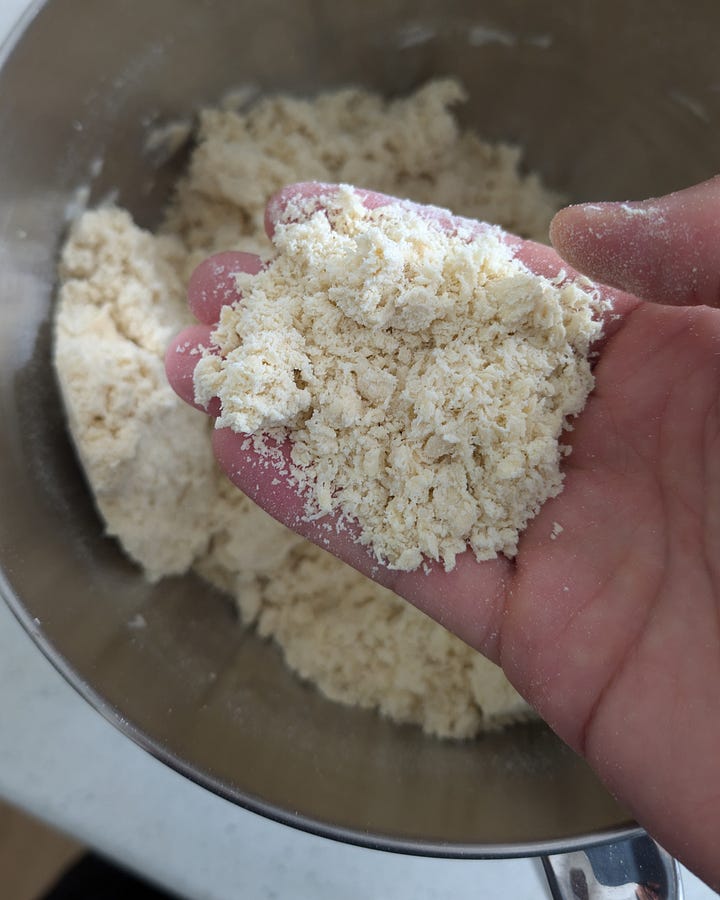
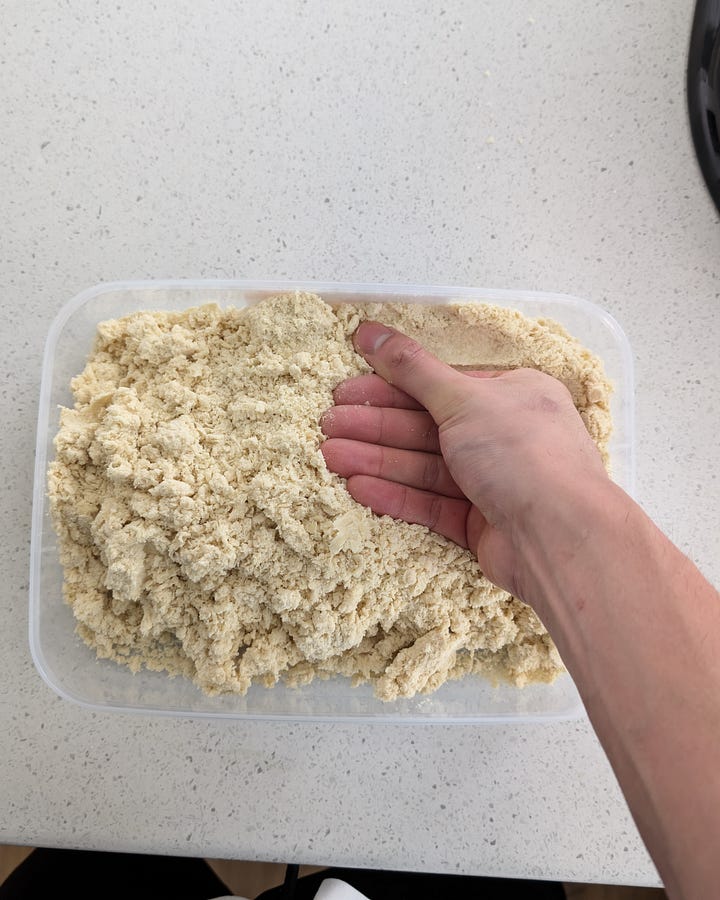
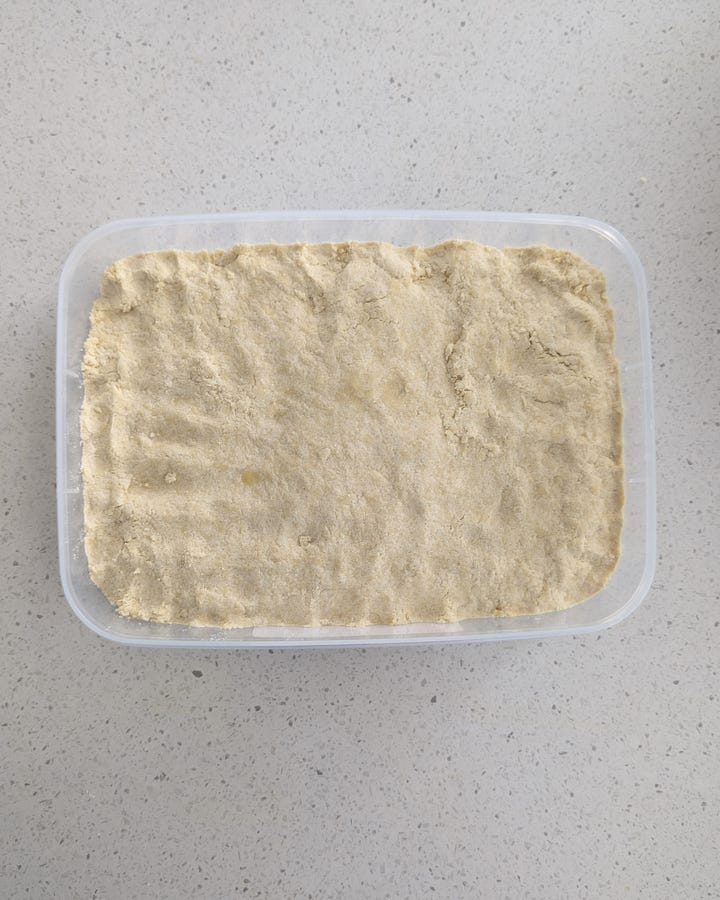
5 - Sheet dough
Now the dough should feel significantly more hydrated after resting.
Use a rolling pin to press/roll the dough until it’s flat enough to fit into your pasta machine’s thickest setting.
Roll the dough through repeatedly until half its starting thickness.
Reset the pasta machine to the thickest setting, fold the dough sheet on itself lengthways and roll through each setting until half the thickness again, repeat this lamination process 2-3 times.
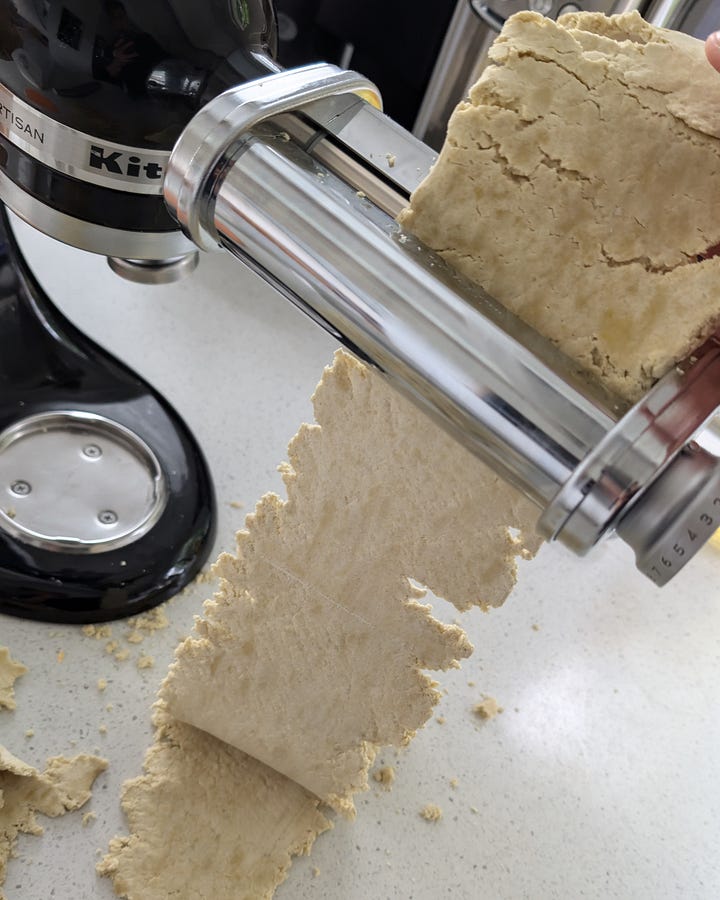
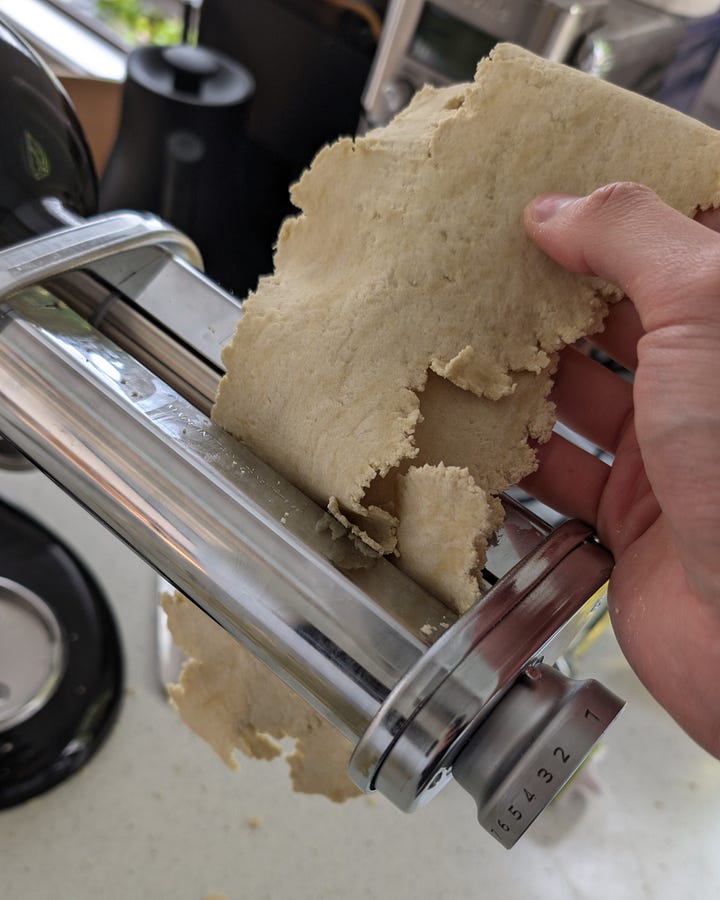
After 2-3 cycles the dough sheet should become significantly smoother, if the edges are still ragged then continue the lamination process. Once the sheets are mostly smooth you're good to go.
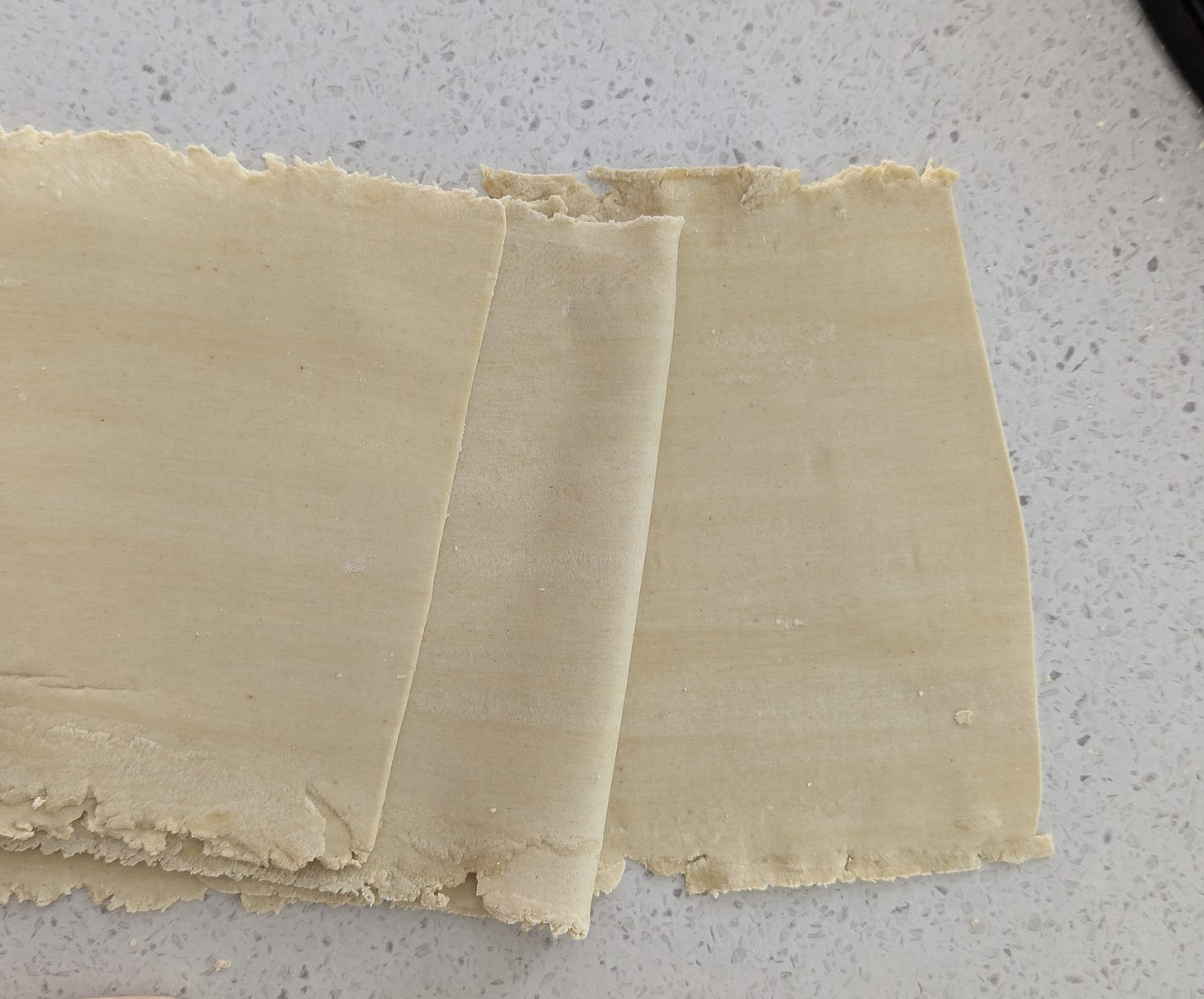
6 - Roll to thickness and cut
Roll the noodle sheet to 1.5mm - 2mm thickness (this is usually the pasta machine’s thinnest or second thinnest setting).
Cut the noodle sheet into desired length (30cm - 35cm ish)
Attach a 2mm (spaghetti size) cutter to your pasta machine and cut the noodle sheets into noodles.
7 - Dust and portion noodles
Lightly dust the noodles in cornstarch and portion into 150g bundles.
Store in an airtight container and in the fridge.
Chicken Soup
8 - Prepare chickens (Day of serving)
Whole chickens; break down into pieces (2 breasts, 2 thighs, 2 wings and carcass). Take the skin off the breasts to add to the soup but the breast meat can be reserved for something else.
(Chicken breast meat doesn’t add much to this soup so is best reserved for another purpose).
Stewing hens; break down into pieces (2 thighs, 2 wings, carcass with breasts attached).
Chicken feet; rinse in cold water and trim the nails/claws and peel any excess skin.
You’re aiming for around 3kg of usable yield from everything, adjust the water you add in the next step if you have more or less than 3kg.
9 - Get the soup going
Layer the carcasses on the bottom of the stockpot, then thighs and then the chicken feet, finally add the wings and skin from the chicken breast. I like to do this as the bottom of the pot tends to get to a slightly higher temperature than the top so the parts that need more
Add 3.5 litres of water to the stockpot and heat over medium-high heat.
Heat until the soup reaches 85 degrees then turn down the stove to a heat that maintains 85 degrees.
Check often initially until the temperature is stable.
Try and avoid agitating the soup too much as this will cause the soup to become cloudy.
Scum will begin to float to surface in the first hour. Try and skim off as much of this as you can.
Cook for 5 hours.
This is a great time to make the remaining elements (come back to steps 10 and 11 if you are).
10 - Add vegetables
Cut the onion and garlic in half lengthways and add to the soup.
Layer the napa cabbage leaves on top.
Cook a further 2 hours at the same temperature (85 degrees)
11 - Strain soup
Carefully strain the soup into another pot or container, set aside until ready to serve.
Dashi
12 - Soak kombu & niboshi
In a container or large enough pot, soak the 20g of kombu and 20g of niboshi in 1.2ltr of water. Set aside for at least 4 hours or overnight.
13 - Heat dashi
Heat kombu, niboshi and the water it was soaking in until it reaches 80 degrees.
Hold at 80 degrees for 10 minutes.
Once 10 minutes is up, take off the heat and take out the kombu and niboshi (these can be discarded).
14 - Add katsuobushi
Add katsuobushi (off the heat) and let steep for 10 minutes.
Afterwards strain out katsuobushi and set aside until ready to serve.
Shallot & Garlic Oil
15 - Finely dice alliums
Finely dice shallots, garlic and spring onion whites.
(Save the green part of the spring onion for the toppings).
16 - Fry until a golden brown
Heat vegetable oil in a pot over medium high heat, when the oil reaches 160 degrees add the diced alliums.
(You can test the oil is hot enough by dropping a couple pieces in, it should immediately sizzle and float to the top).
While this is cooking, I’d recommend getting a metal bowl or pot set up with a strainer. Alliums go from perfect to burn in a matter of seconds so you don’t want to be messing around when it’s ready!
Cook until golden brown, the aroma oil should smell nicely toasty and not have a raw onion smell.
17 - Strain oil
Strain the oil into a metal bowl or pot.
We’ll only be using the oil for this recipe, the fried bits of shallots etc can be saved for something else.
Shoyu Tare (cont.)
18 - Heat Shoyu tare
Heat the Shoyu tare (with the shiitake and kombu) over medium heat until it reaches 80 degrees.
Once it reaches 80 degrees, remove the shiitake and kombu.
19 - Add salt & fish sauce
Add salt to the strained shoyu tare and mix until dissolved.
When cooled to room temperature, add the fish sauce.
Remaining Toppings
20 - Blanch Spinach
Bring a pot of water to boil and prepare an ice bath.
Wash the spinach well, making sure to get in the root area.
Once the water is boiling, drop the spinach in (root side in first).
Blanch for 30 seconds then plunge into ice bath to stop the cooking process.
After the spinach is cool, squeeze out any excess moisture and cut into 5cm lengths.
21 - Cut spring onion
Thinly slice the green part of the spring onion and set aside.
22 - Cut nori
Cut your nori sheets into 4 even squares.
Serving the Ramen
Now’s a good time to pull all the components out of the fridge, ramen comes together super quick once the prep’s all done so you want everything to be handy.
You should have:
Chicken soup
Dashi
Noodles
Shoyu Tare
Shallot & Garlic aroma oil
Chashu
Ajitama
Spinach
Sliced spring onion
Nori
Once the ramen’s served you want to eat it as soon as possible so now’s your chance to set the table, get drinks ready and make sure everyone’s ready to eat some ramen.
1 - Get the pots on!
Heat up a big pot of water to boiling point (for cooking the noodles) and another smaller pot for the soup.
For the smaller pot for the soup, combine 200ml of chicken soup and 100ml of dashi per portion.
Heat over medium heat then reduce to a simmer (avoid boiling to prevent this from going cloudy).
2 - Blow torch chashu
Place chashu on an oven tray or frying pan.
Brush the braising liquid over the chashu (microwave this so it turns back into a liquid).
Blow torch the chashu until nicely seared (however charred you like it).
Set aside for now.
3 - Add tare and aroma oil to bowls
Add 20ml of shoyu tare and 20ml of shallot & garlic oil into each bowl.
(optionally, heat the bowls up beforehand by pouring hot water into them and then pouring out the water once the bowls are hot enough).
4 - Cook noodles
Once the water is at a rolling boil, drop the noodles (may need to do batches if cooking a lot of portions) and put a timer on for 1minute & 30 seconds.
While the noodles are cooking, pour 300ml of soup into each bowl.
After the timer has gone off, strain the noodles well and carefully drop into the bowls with soup in them.
5 - Add toppings and serve
Place the chashu, ajitama, spinach, spring onion and nori on top and serve immediately.
Pro-tip: folding the noodles to form a platform helps the toppings stay in place.

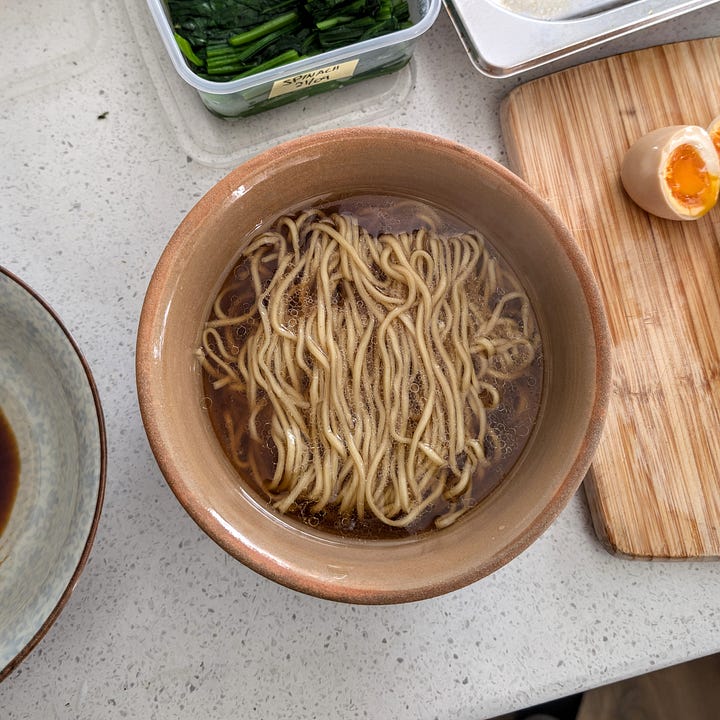






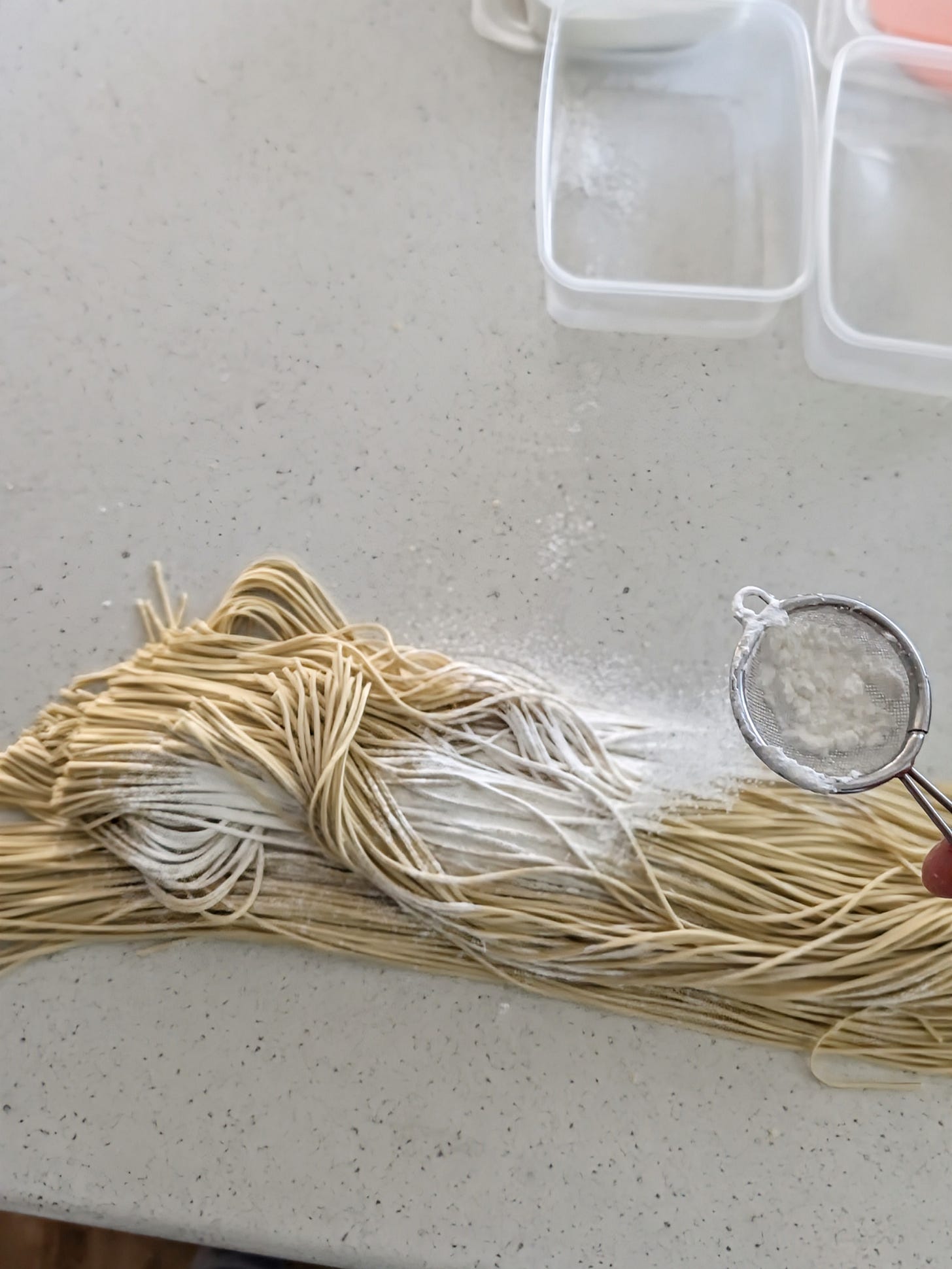

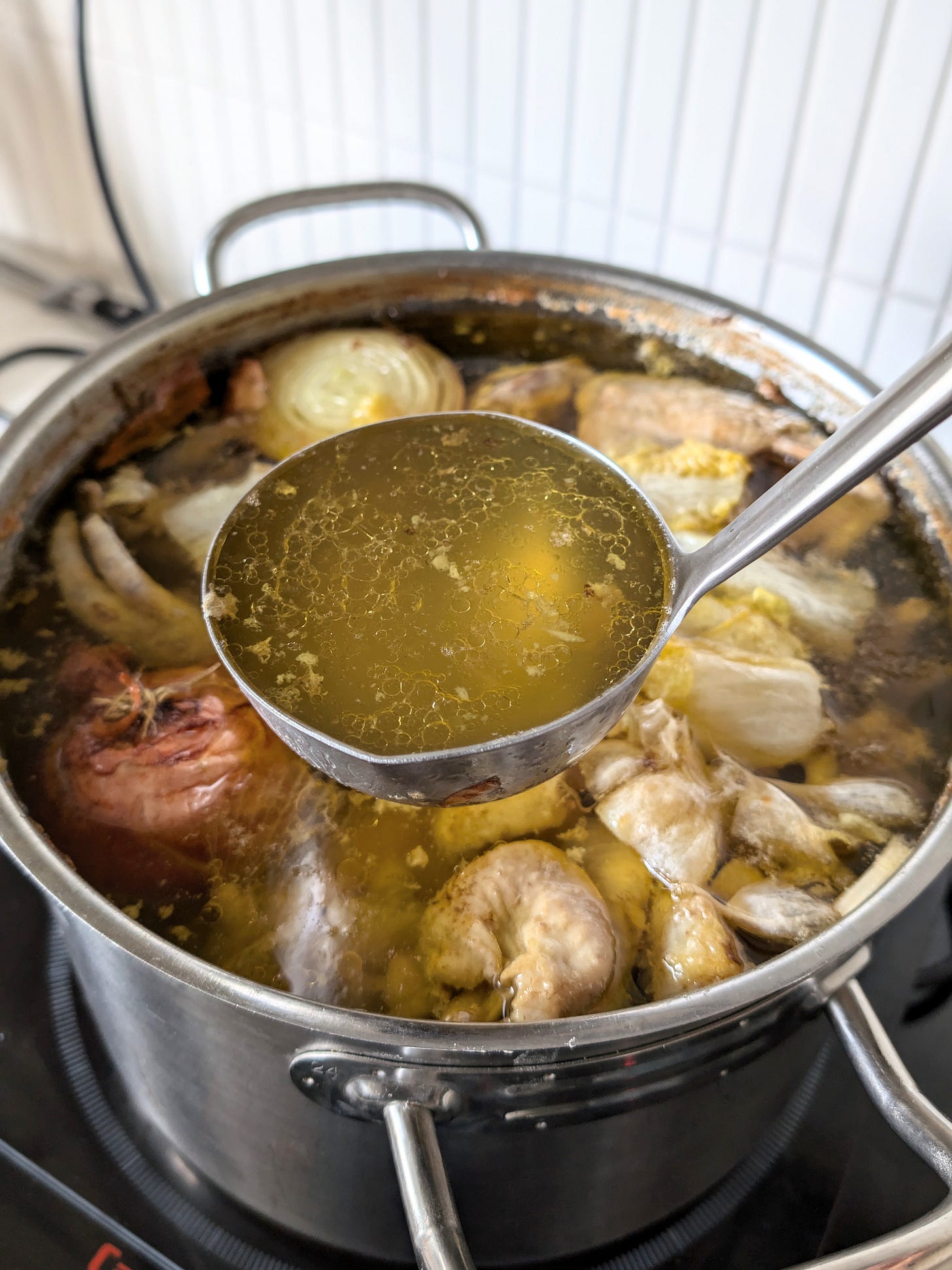

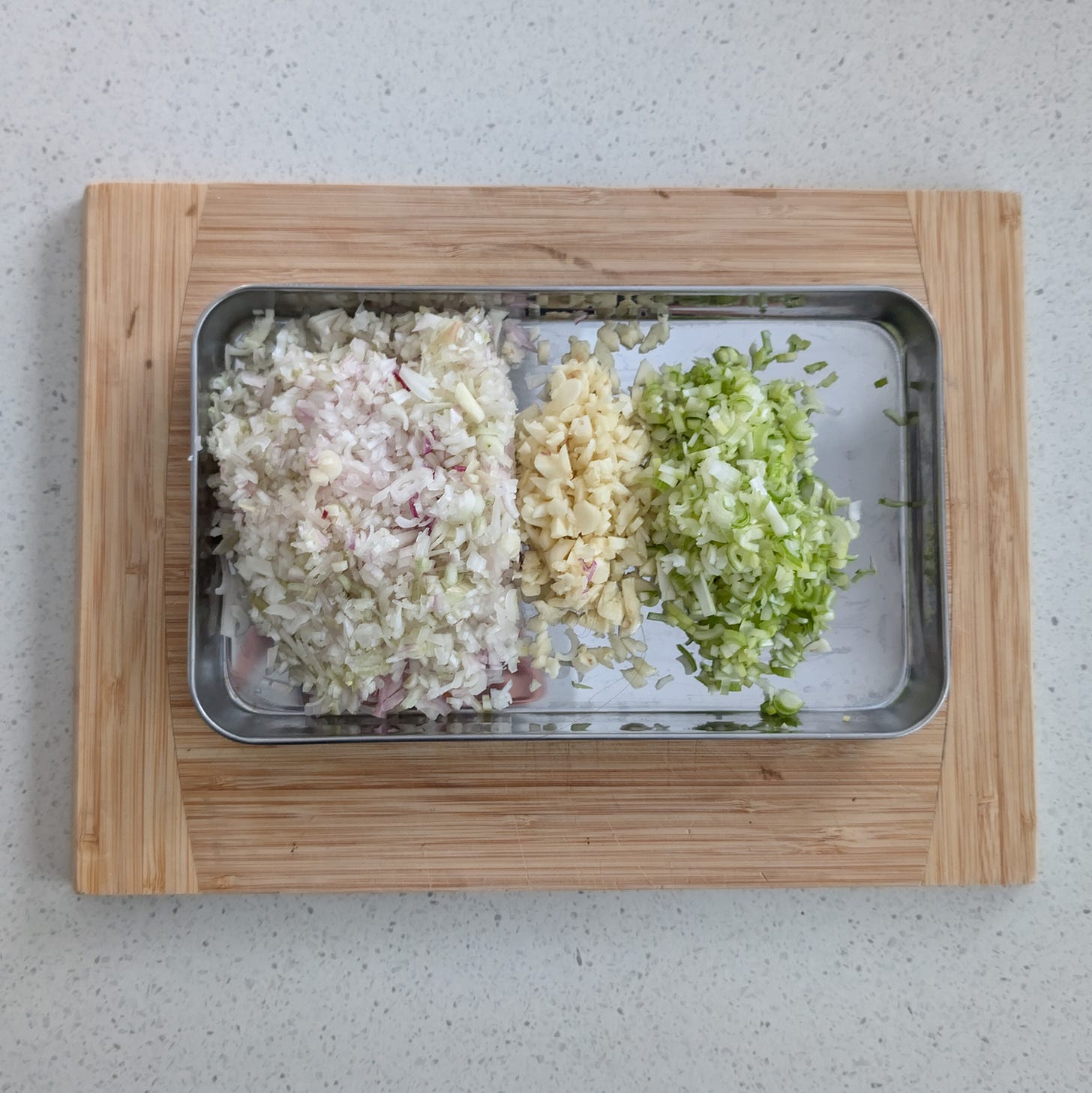

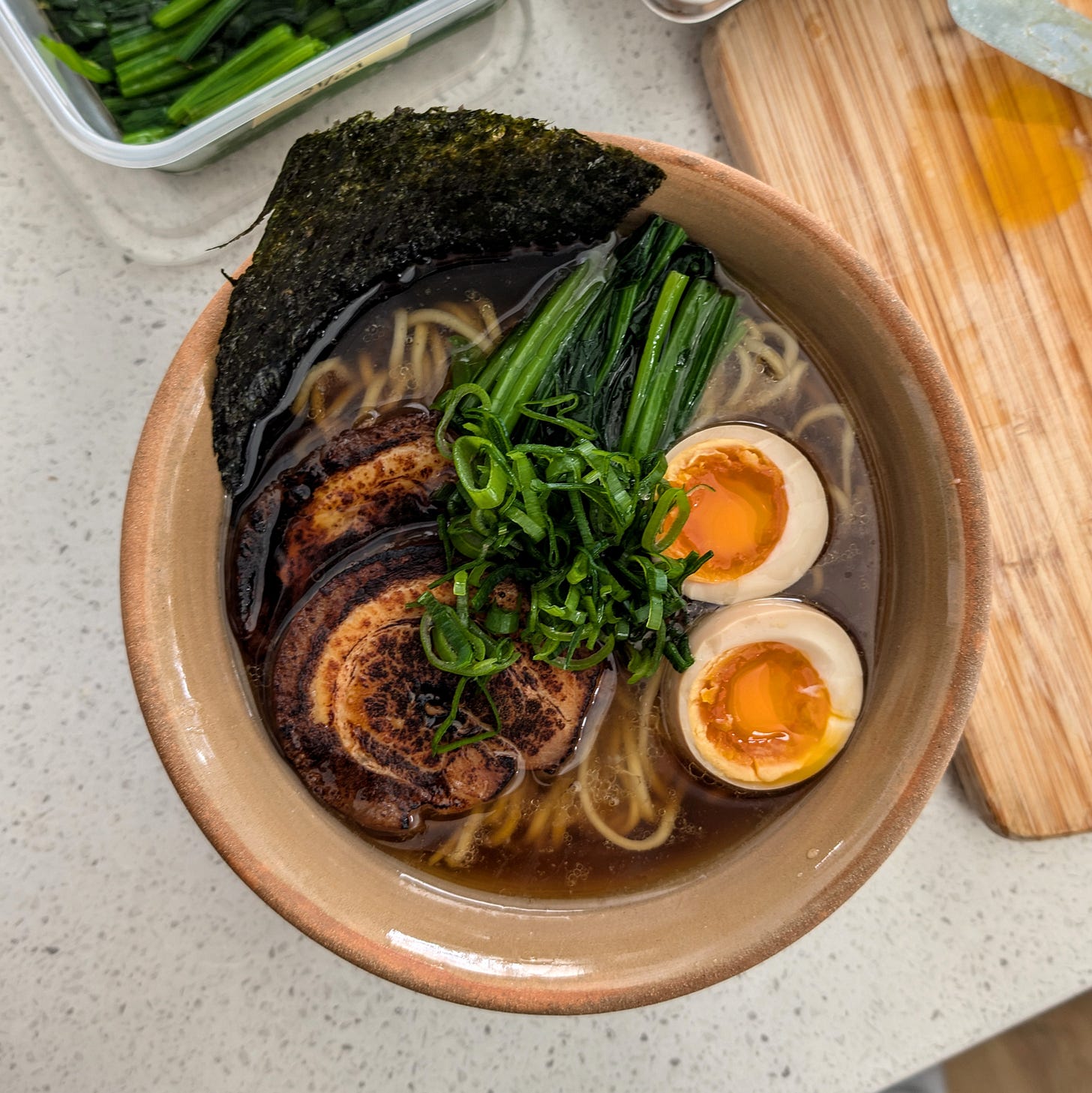
Thank you for so generously sharing your recipes and comprehensive notes & photos. It makes us appreciate your pop-ups all the more & we miss them greatly!